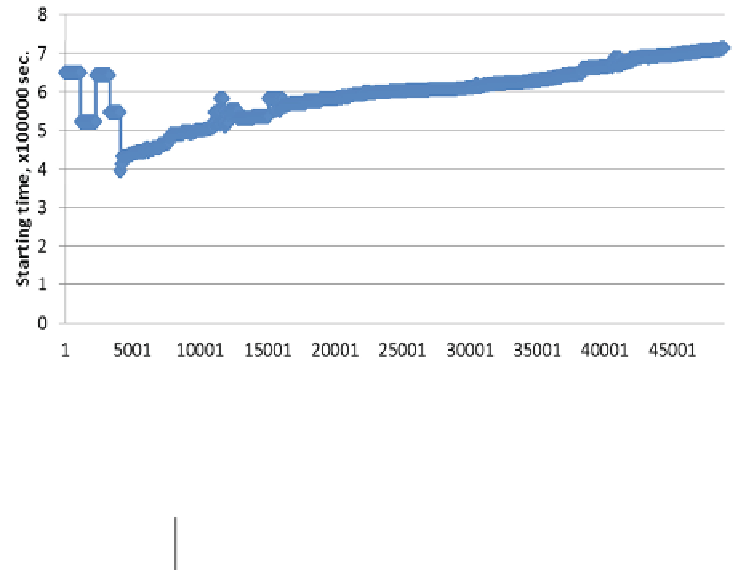Information Technology Reference
In-Depth Information
baseline algorithm on problem of VM allocation for comparison in this paper.
The PABFD sorts all VMs by their current requested CPU utilization from
highest to lowest and then uses a Best-Fit Decreasing heuristic to select a phys-
ical machine for the first new virtual machine that has minimizing increasing
power on each placement of the VM to assign a new VM. The PABFD is pre-
sented in [
6
] and also denoted as MBFD in [
5
].
Fig. 2.
The HPC simulated workload with starting times of 48,880 cloudlets
Table 2.
Energy consumption (KWh)
VM Allocation
Heuristic
Num. of
Hosts
Num. of
VMs
Energy
(KWh)
Energy Saving (%)
+: better; -:worst
Shutdown
Hosts
PABFD
10000
48880
844.28
0%
21484
VBP Greedy L1
10000
48880 1072.86
-27%
23243
VBP Greedy L2
10000
48880 1072.86
-27%
23243
VBP Greedy L30
10000
48880 1072.86
-27%
23243
EPOBF-ST
10000
48880
664.16
21%
19025
EPOBF-FT
10000
48880
551.45
35%
18904
VBP greedy L1
,
VBP greedy L2
,and
VBP greedy L30
: We implemented the
vector bin packing (VBP) heuristic that is presented as Norm-based Greedy
L1, Norm-based Greedy L2, and Norm-based Greedy L30 in [
19
]. All weights
of the Norm-based Greedy heuristics are proposed in and are implemented as
FFDAvgSum [
19
], which takes weights of resource dimensions that are exponen-
tial in average of the sum of demand resources.





































Search WWH ::

Custom Search